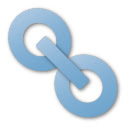NoFollow is an extension primarily designed to assist users in detecting nofollow and noindex meta tags embedded on web pages. This tool allows for outlining nofollow links, which helps individuals involved in SEO activities to understand and analyze pages more efficiently. This extension supports NOFOLLOW, UGC, and SPONSORED attribute values and specific search engine robot meta tags.
The extension has been constantly evolving with continuous improvements and bug fixes. The latest update in the v5.3.4 version has resolved the error on saving options. If users experience any issues or want to raise concerns, they can contact and report the issues through. The changelog keeps users updated with the constant advancements and revisions for better user experience and improved performance.
| Extension Name | NoFollow |
| Users | 100,000 users |
| Rating | 4.3 |
| Version | 5.3.4 |
| Updated | June 30, 2021 |
| Category | Developer Tools |
What is the NoFollow Chrome Extension
It is a value that can be assigned to the “rel” attribute of an HTML “a” element to instruct search engines that the hyperlink should not influence the ranking of the link’s target in the search engine’s index. In general, It is used to reduce the effectiveness of certain types of search engine spam, thereby improving search engine results’ quality and preventing spamdexing.
Understanding how “Nofollow” works is fundamental for website owners and developers to manage and optimize Search Engine Optimization (SEO) properly.
How to use the NoFollow Chrome Extension
- It informs search engines that a hyperlink should not affect the link target’s ranking in the search engine index.
- It is usually used when a website does not want to authorize another web page.
- It is used when the other web page has no control over its content.
To use NoFollow, place a standard HTML link tag in your webpage code. For instance: Example. To make this a NoFollow link, simply revise the text as follows: Example. The “rel” attribute defines the relationship between your web page and the linked page. Using the “nofollow” value, you inform search engines not to follow the link.

Using the extension tags wisely can steer search engines in the right direction, manage your site’s authority, and avoid any potential search engine penalty. However, one must remember not to overuse this tool, as relevant DoFollow links are crucial for a well-balanced SEO strategy.
[jetpack-related-posts]
Introduction
Running a successful website is often about understanding and optimizing your site’s SEO. To take control of your SEO, it’s essential to identify and understand the role of nofollow links, UGC, and sponsored attribute values, along with being able to detect nofollow and noindex meta tags on your pages – all factors that can impact your site’s ranking. This is now possible with an impressive Chrome extension that offers support for nofollow, UGC, and sponsored attribute values along with search engine-specific robot meta tags.
Features
The extension has several notable features :
The most important feature is that it supports NOFOLLOW, UGC, and SPONSORED attribute values. These are crucial link attributes that communicate with search engine bots and tell them how to index and crawl a webpage. It also supports search engine-specific robot meta tags, which can be beneficial, considering each search engine may have different algorithms for crawling and indexing.
Beyond this, one of the major advantages of this Chrome extension is the ability to disable or enable the extension for defined websites. It provides exceptional control, allowing users to decide where to use the tool. This feature is instrumental in its user-friendly approach.
Minimum Requirements
Like any software or extension, there are some minimum requirements to note. The software currently requires a minimum of Chrome v54 to function correctly.
Contact & Report Issues
The developers are open to feedback and willing to help with any issues. This makes it easier for users to communicate with them and report any difficulties they may encounter.
Conclusion
The SEO landscape is a tricky field to navigate. The introduction of this Chrome extension, with its ability to identify no-follow links, UGC, and sponsored attribute values and detect no-follow and no-index meta tags, is a game-changer. The meticulous tracking in the changelog of all changes made, improvements achieved, and features attained, is a testament to the ongoing development and adaptation of the plugin to meet the industry’s ever-changing needs. It is not only a tool for the present but one that is consistently evolving for the future, placing it as a must-have extension for anyone serious about their online presence.
Install Chrome Extension
FAQ
A NoFollow link is a type of link that instructs search engines not to pass any link juice to the destination URL. This means that it does not contribute to the site’s SEO or improve the page rank of the linked-to sites.
It links are commonly used in cases where the webmaster does not want to pass authority to the linked site or cannot vouch for the veracity of the linked site. This includes links to comments or forums, paid links, or those from other untrusted sources.
To link NoFollow, add the attribute rel=”nofollow” within the link’s HTML. For example, < a href=”http://www.example.com/” rel=”nofollow”>link</ a>.
While Google does crawl NoFollow links, it does not pass link equity or authority through these links, and will not influence the search rankings of the destination page.
